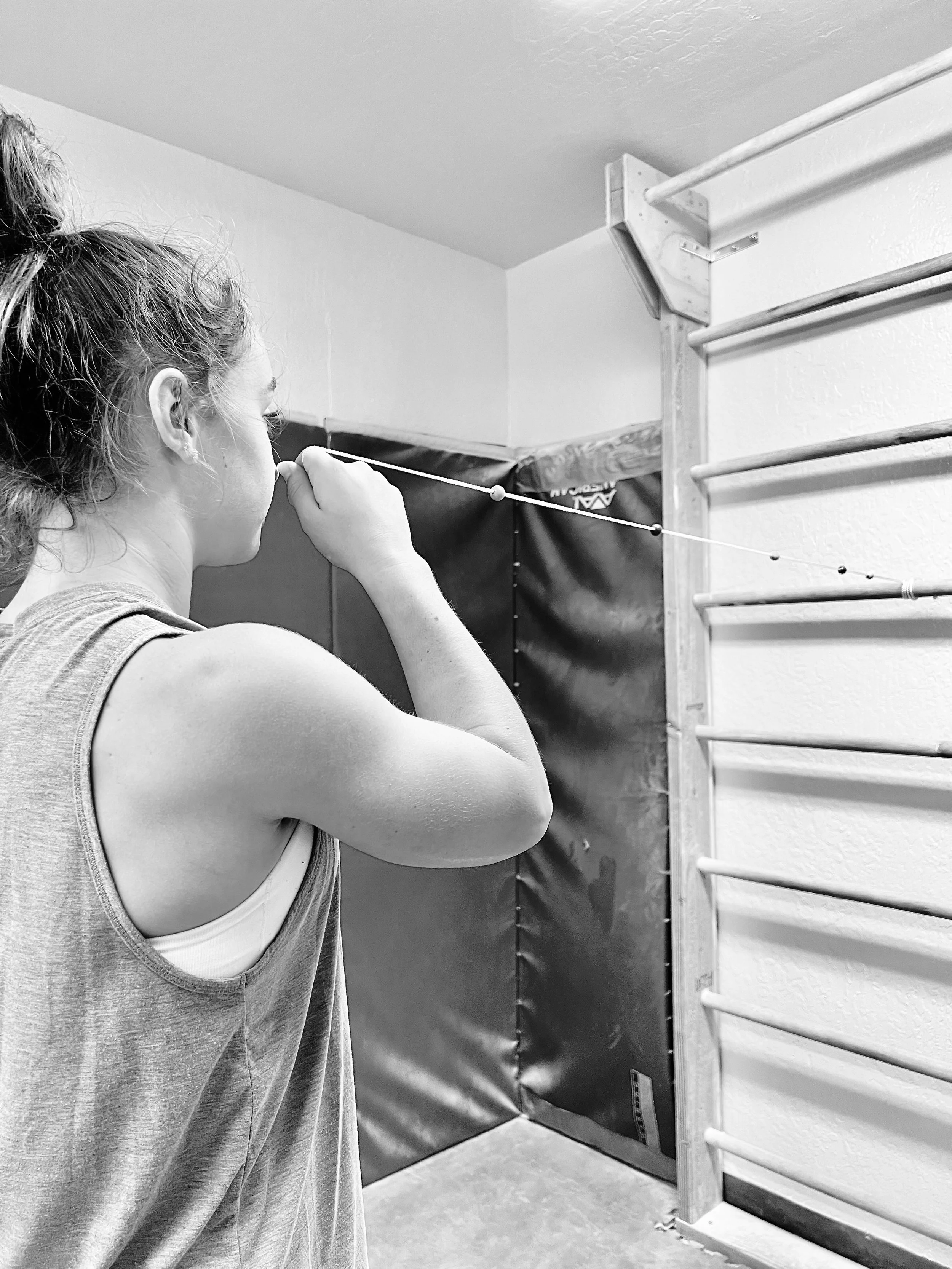What’s possible when we harness the power of the brain
What if gymnasts had a single drill that could:
Help them tumble straighter
Generate more power in their beam series
Improve flexibility of their shoulders
Help their back hurt less
These are all things I’ve observed after a single 20-second drill for their eyes. How is this possible?
We can change the body by changing the brain.
What else is possible?
I believe that we can reduce the impacts of training and competition by intentionally and purposefully including the brain. We can make training more efficient.
I know it’s possible for gymnasts to generate more power while feeling less effort.
There are decades of motor learning research demonstrating that specific coaching language accelerates skill acquisition.
LESS EFFORT = FEWER REPS = LESS IMPACT ON THE BODY
Gymnast doing a drill that trains depth judgement.
Change at the speed of the nervous system
When I started introducing brain-based drills to gymnasts, I started with flexibility, because we can alter muscle tone by activating specific areas of the brain. Some common outcomes:
A 30-second vestibular drill (activating the balance system in our inner ear) improved back and hamstring flexibility
A drill for the tongue opened up shoulder flexibility
A hand-eye coordination drill helped range of motion for splits
Things got more interesting when I applied the approach to beam and tumbling. The process:
Do a skill or tumbling pass
Do a drill
Do the exact same skill or tumbling pass
After the 2nd pass, I would ask, “How did it compare to the one before?” Sometimes the answer would be, “It felt the same.” Or in some cases, “It felt slower.” This can be part of the process in determining the optimal drill, but when we find the right one, the answers have been:
“It felt straighter.”
“It felt easier.”
“I felt more power.”
“My back hurt less.”
(Some of this is also observable)
It’s game-changing for performance, wellness and longevity
It felt straighter: If a gymnast is repeatedly falling to the right, instead of doing the skill 5 more times to find alignment, what if she did a 10-second vestibular that reliably helps her go straight? Fewer reps = less impact on the body.
It felt easier: While I have yet to test this in a biomechanics lab, if I hear ‘it felt easier,’ I surmise that the body has become more efficient and is expending less energy. Why? The intention of a drill is to correct imbalances and prime muscle function. If you’re a coach, you’ve likely seen a gymnast throw her had to the right or left as she tumbles backwards. This then requires her to fix & realign her body from the momentum of her head sending her body off center. By addressing this before the skill, the brain and body aren’t having to make many tiny corrections in real-time. Less effort is required.
I felt more power: Again, because we can alter muscle tone and function by activating the brain, we can provide that little extra ooomph for skills that require it. Athletes can unlock new levels of performance.
My back hurt less: This could be because the right drill will change muscle tone; it could also be that we’re reducing a subconscious source threat to the brain, which in response can generate a signal (pain) to get our attention. Either way, the gymnast feels less pain, less restriction, and may feel less anxiety about trusting her body to perform when she needs it.
I’m making some bold statements and hypotheses above, but I’ve seen what happens with the right tools.
Amazing and profound change is possible by training your brain, and I’d love to help you find MORE… flexibility, balance, power, speed or help you be free of limiting pain and stiffness.
If you want to keep learning, add your name and email below or follow me on Instagram. For coaching and clinics, you can reach me at levelupneuro@gmail.com.

